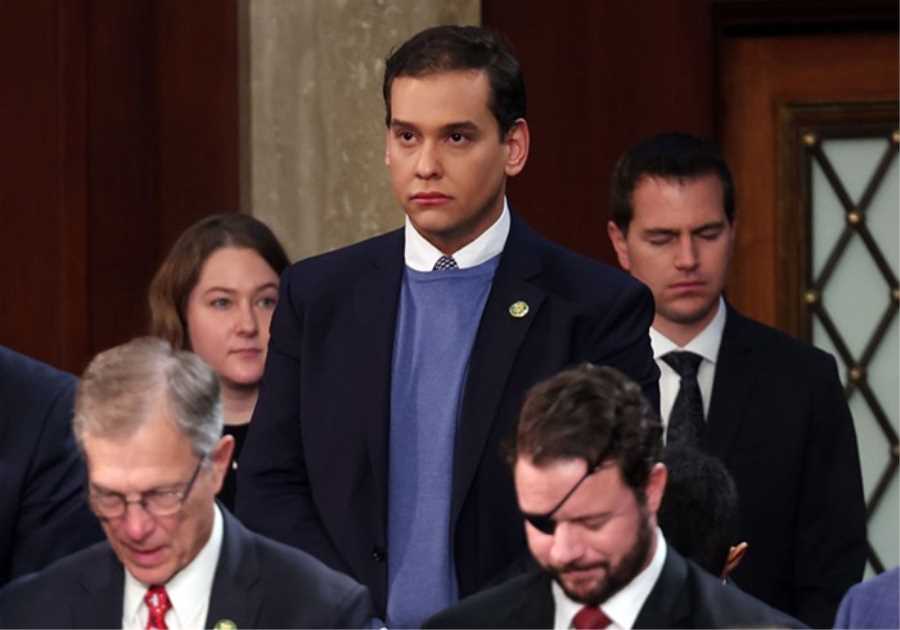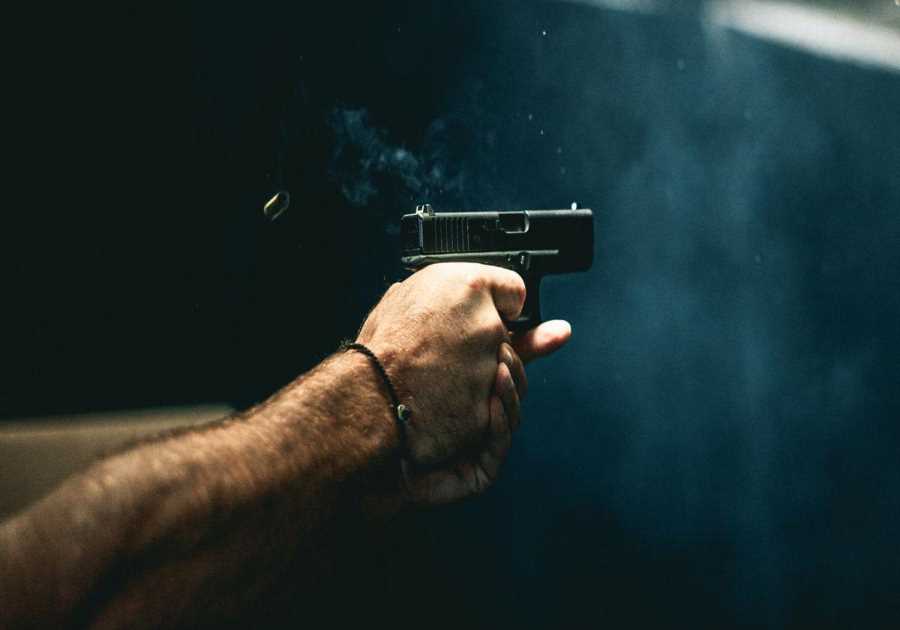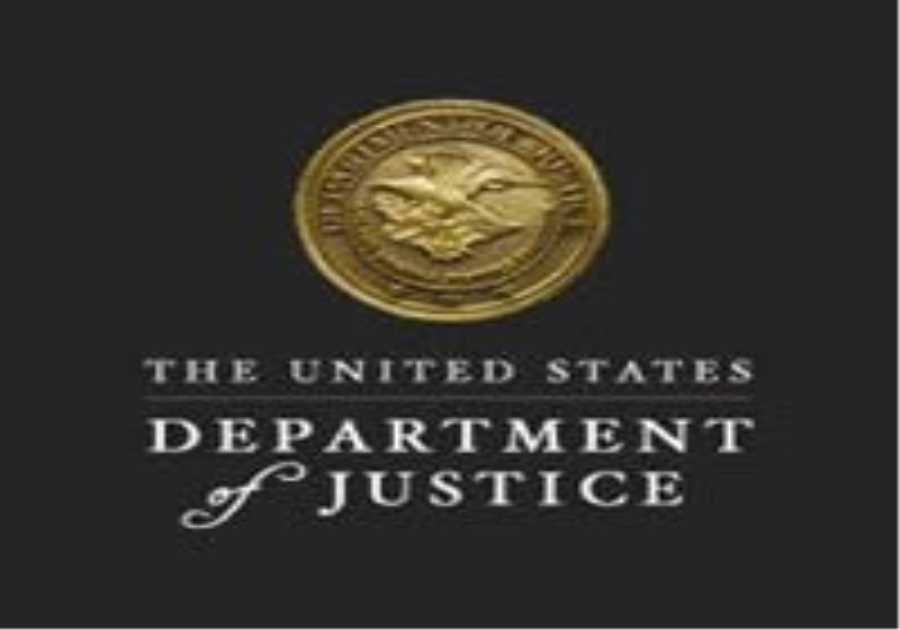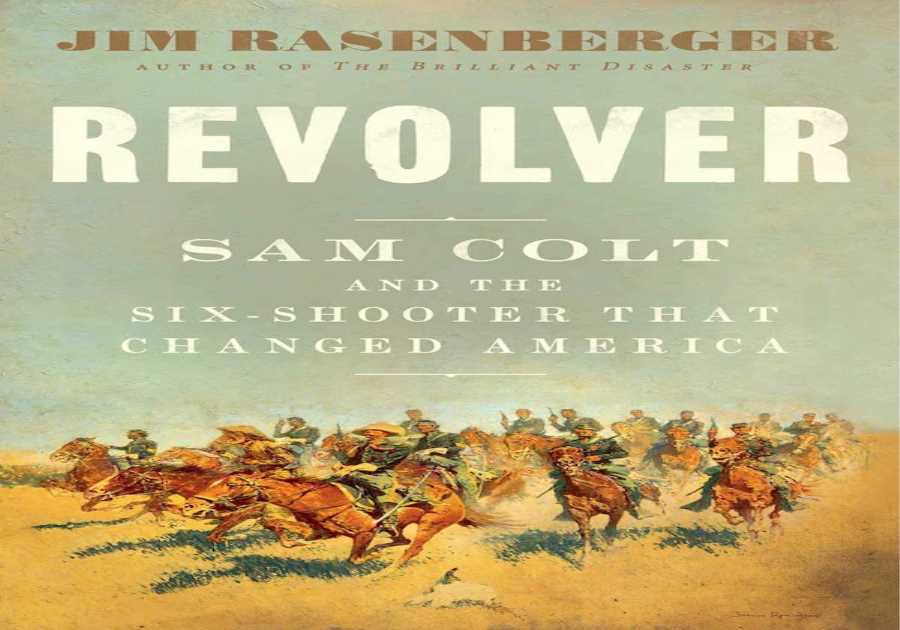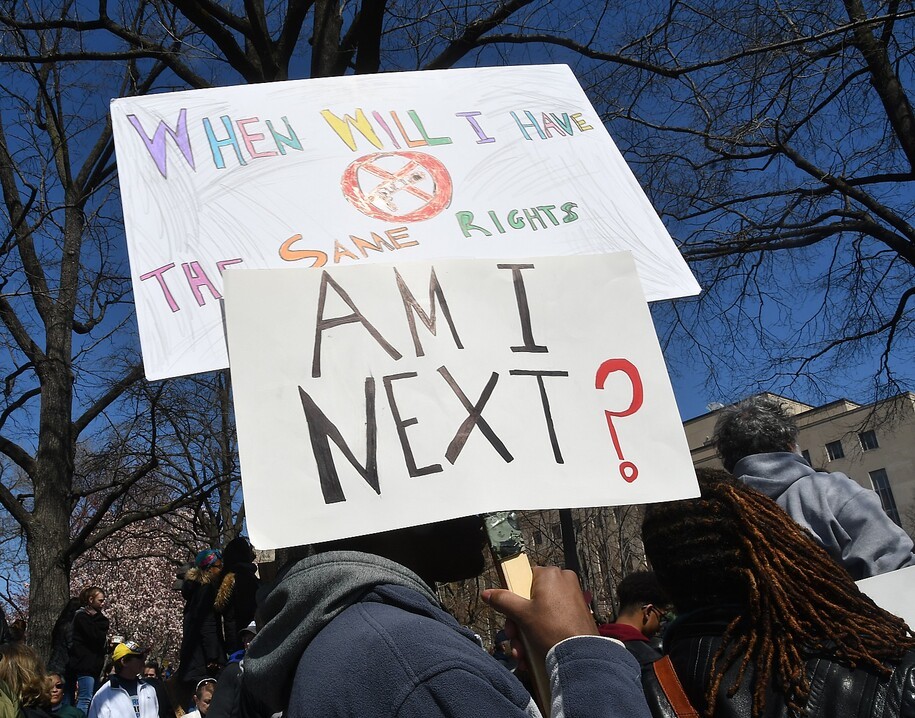
March for Our Lives protest in Washington DC organized by survivors of the Parkland massacre. All these massacres have something in common: the shooter all too easily and legally purchased a weapon built for war. Efforts to reinstate a ban on assault weapons and high-capacity magazines have been thwarted. President Biden is renewing a call for the ban © Karen Rubin/news-photos-features.com
By Karen Rubin, News-Photos-Features.com
This week marks the 10th anniversary of the massacre of 20 six-year olds and their six teachers at Sandy Hook elementary school in Newtown, Connecticut.
President Biden attended what has become an annual vigil for victims of gun violence – the first president to attend since Obama (Trump is the poster child for promoting gun violence). 100 people a day have died by guns since then, some 400,000 people. Snuff out.
Just this year alone – so far – 622 MASS shootings – that’s more than two MASS shootings each day. Guns are the highest cause of death for children in this country. But except for the gun legislation Biden managed to get through – the first in 30 years – significant legislation to address the gun violence epidemic has yet to become law – outright ban assault weapons and high-capacity magazines; universal background checks; licensing/registration every five years; liability insurance; tougher red-flag laws. It’s harder to adopt a pet or vote (which is actually in the Constitution) than purchase a weapon of war.
While we tend to focus only on the dead, we rarely consider the victims and survivors that add 100-fold to the numbers or to the calculation of actual cost – that is, beyond the incalculable cost of pain, suffering, loss, intimidation, terror , diminished rights of free speech, protest, assembly, fair elections – of coddling a gun industry and its lobbyists and enablers.
Let’s tally the costs.
$557 billion a year, according to a study by Everytown for Gun Safety examining the direct and indirect costs from all gun violence in America, fatal and non-fatal.
The $557 billion EACH YEAR includes everything from the immediate cost at a shooting, such as the police response, investigation and ambulance services, to the long-term health care costs, Eric Westervelt reported on the “All Things Considered” broadcast. It also includes things like a victim’s lost earnings, the price of mental health care and more. The report also tries to calculate apparently less tangible and hard-to-pin-down costs. It estimates society loses some $1.3 billion every day for “suffering and lost well-being of gun violence to victims and their families.” The true annual figure is likely higher.
“This is honestly a very conservative estimate,” Sarah Burd-Sharps, research director at the gun control advocacy group, asserted. “It covers directly measurable costs. It doesn’t cover things like the trauma of children who don’t return to their school, the impact on businesses or on property values and taxes. It doesn’t cover any of those wider reverberations.”
It also doesn’t take into account the lost productivity, not only by losing a loved one, but that the physical and mental injury to those who survive a shooting, and the cost to the family in losing that source of income and productivity, each year and for years, perhaps a lifetime after. That could be millions of dollars lost to that family.
Add to that $557 billion EACH YEAR the billions of dollars more spent each year to “harden” vulnerable targets – schools and college campuses, synagogues and churches, office buildings, government buildings, shopping malls, airports and transit hubs – with infrastructure and ongoing security . School security industry alone has grown to $3.1 billion a year, an amount expected to grow at a rate of 8 percent a year. How much did it cost Newtown, Connecticut to level and replace Sandy Hook elementary school? How much to rebuild Robb Elementary in Uvalde, Texas?
All to support a gun industry that racked up $70.5 billion in total economic activity in 2021, the National Shooting Sports Foundation (NSSF) is proud to claim. 2021 was the second highest year for gun sales, when 5.4 million Americans bought 18.5 million firearms. Smith & Wesson, alone, had $1 billion in sales, up from $520 million in 2020.
Americans make up 4 percent of the global population, but possess 46 percent of guns in civilian hands. In 2018, there were 393.3 million weapons which works out to 120.5 guns per 100 residents, making the US the only country with more civilian-owned firearms than people, according to Bloomberg.
The number of guns has increased exponentially since 2018, to well over 400 million. The gun industry sold 18.5 million firearms to 5.4 million Americans in 2021 on top of 21 million sold in 2020.
The biggest sellers have been assault weapons that the gun industry happily markets as putting in your hands a weapon built for war.
“The American gun industry has reaped an estimated $1 billion in sales over the past decade from AR-15-style guns, and it has done so by using and cultivating their status as near mythical emblems of power, hyper-patriotism and manhood,” the New York Times editorial board wrote this week, “America’s Toxic Gun Culture”
In 1994, when the assault weapons ban went into effect, there were some 1.5 million assault weapons in American civilian hands; today there are an estimated 25 million, with 4.5 million more just since the last survey, the reload gun enthusiast publication excitedly reports.
“This is a truly significant figure that demonstrates – again – the popularity of this commonly-owned style of rifle,” Joe Bartozzi, NSSF President, said in a statement to The Reload. “The firearm industry responds to market demand and this shows that during the elevated period of firearm sales that began in 2020, this particular style of rifle is the top choice for law-abiding citizens for hunting, recreational shooting and self-defense.”
“There are more MSRs [“modern sporting rifle” is what the industry calls assault-style weapons] in circulation today than there are Ford F-Series trucks on the road.”
Mass shootings, far from quelling demand for guns, actually spur purchases from those concerned that lawmakers could enact gun-control measures, the FBI checks have shown repeatedly, Bloomberg reported. “Investors know this. Shares of Smith & Wesson Brands Inc. rose 8.9% to $15.19 at 12:14 pm in New York and Sturm Ruger & Co.the maker of handguns, rose 6.1% to $67.51.”
Include in the dollars and no sense, is the amount that gun rights groups spend on lobbying,: a record $15.8 million in 2021 and $2 million in the first quarter of 2022, the transparency group OpenSecrets reported. “From 1989 to 2022, gun rights groups contributed $50.5 million to federal candidates and party committees,” the group found. “Of that, 99 percent of direct contributions went to Republicans.”
That’s a pittance – taxi fare – compared to the $70 billion in annual gun sales, so quite a ROI.
During the ban, the average number of deaths from shootings was at 4.8 per year, in the decade after, the number tripled to 23.8 per year.
It is estimated that had the ban that had been in effect from 1994-2004 continued, the number of mass killings would have decreased by 70 percent.
Tell that to the survivors and victims. Tell that to the future survivors and victims.
$557 billion versus $70 billion? Or more accurately $70 billion versus incalculable loss.
__________________________
© 2022 News & Photo Features Syndicate, a division of Workstyles, Inc. All rights reserved. For editorial feature and photo information, go to www.news-photos-features.comemail [email protected]. blogging at www.dailykos.com/blogs/NewsPhotosFeatures. ‘Like’ us on facebook.com/NewsPhotoFeaturesTweet @KarenBRubin



